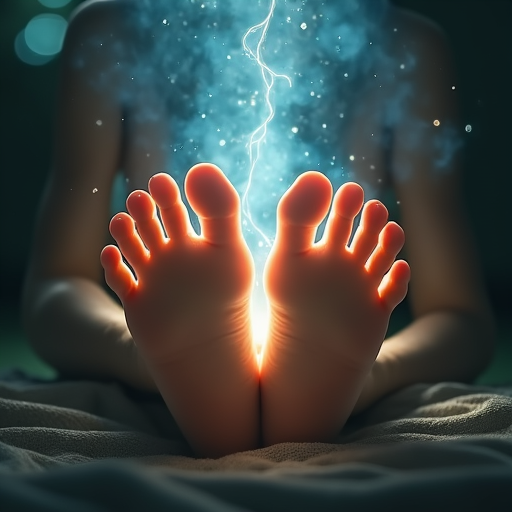The Miraculous Transformation of Your Toes: Unlocking the Secrets of “Miracle Toes”
In recent times, the common complaint of foot cramps has been a frequent topic of discussion. Particularly among those who have explored the non-verbal hypnotic technique known as the “Miracle Toes,” a method championed by Hypnosis creator Tamura. This innovative approach aims to guide individuals towards the ideal, yogic-inspired foot posture, but the rapid nature of the transformation can often lead to unexpected muscle tension and cramping.
The underlying principle is that by allowing the mind to deeply relax, the muscles are able to release their grip, leading to a beautifully elongated and graceful toe position. The “Miracle Toes” technique seeks to expedite this process, helping individuals achieve the desired foot shape in a fraction of the time it would typically take through traditional methods. However, this accelerated transformation can sometimes outpace the body’s natural adaptability, resulting in those dreaded foot cramps.
Unleashing the Power of Hypnosis: Transforming Feet, Conquering Cramps
In the pursuit of the “Miracle Toes,” a captivating technique developed by the Hypnotic Cafe, individuals often find themselves on a transformative journey. This non-verbal hypnosis approach aims to guide practitioners towards the ideal yogi feet, gently coaxing the muscles and tendons to unlock their full potential. However, the rapid nature of this change can sometimes outpace the body’s natural adaptation, leading to the dreaded cramps that many have experienced.
While the occurrence of cramps may seem like a setback, it is, in fact, a sign of progress. As the body’s energy, or “qi,” flows more freely, the muscles can react with sudden spasms, a natural byproduct of the transformation. This is not a cause for alarm, but rather a testament to the efficacy of the “Miracle Toes” technique. Hypnosis creator Tamura, the mastermind behind this innovative approach, encourages practitioners to embrace these cramps as a positive indicator of the foot’s evolution, rather than a hindrance to be feared.
To mitigate the discomfort of these cramps, Tamura recommends a multi-pronged approach. Gentle massage, targeted stretching, and stimulation of the foot’s pressure points can all help to soothe the muscles and facilitate a smoother transition. Additionally, taking the time to allow the body to acclimate to the newfound freedom of movement can go a long way in preventing future cramping episodes.

Muscle Recovery and Holistic Wellness: Navigating Cramp Challenges
Despite the potential discomfort, leg cramps during muscle transformation can be viewed as a positive sign of physiological adaptation. When experiencing repeated muscle spasms, it’s crucial to approach recovery holistically. Gentle stretching techniques, targeted massage, and mindful flexibility exercises can help alleviate tension and support muscle integration. Focus on stimulating the foot’s reflex points and practicing slow, deliberate movements to encourage smooth muscle transition.
If cramps persist, remain calm and patient. Consider these muscular responses as part of your body’s natural recalibration process. The temporary discomfort signifies that your muscles are actively responding to new neurological pathways and energetic shifts. By maintaining a balanced perspective and implementing strategic recovery methods, you can navigate these physiological changes more effectively. Over time, your body will develop increased resilience and adaptability, reducing the frequency and intensity of muscle cramping.
Remember that muscle transformation is a nuanced journey requiring consistent commitment and mindful awareness. Embrace the process with curiosity and compassion, recognizing that each physical sensation offers valuable insights into your body’s remarkable adaptive capabilities. By cultivating a holistic approach to wellness and understanding the intricate connections between energy flow and muscular response, you can optimize your transformation experience and support your body’s innate healing potential.



Comments